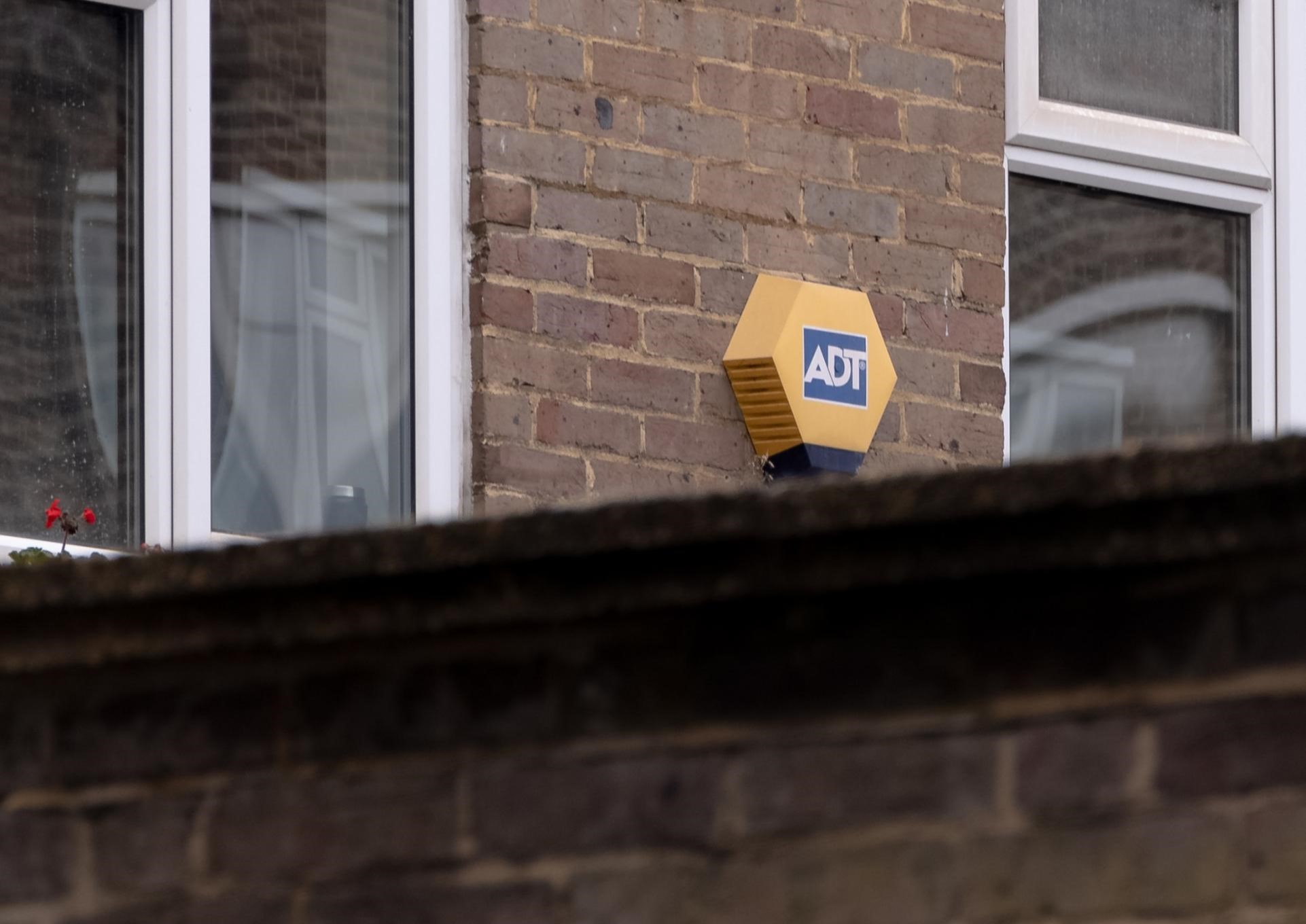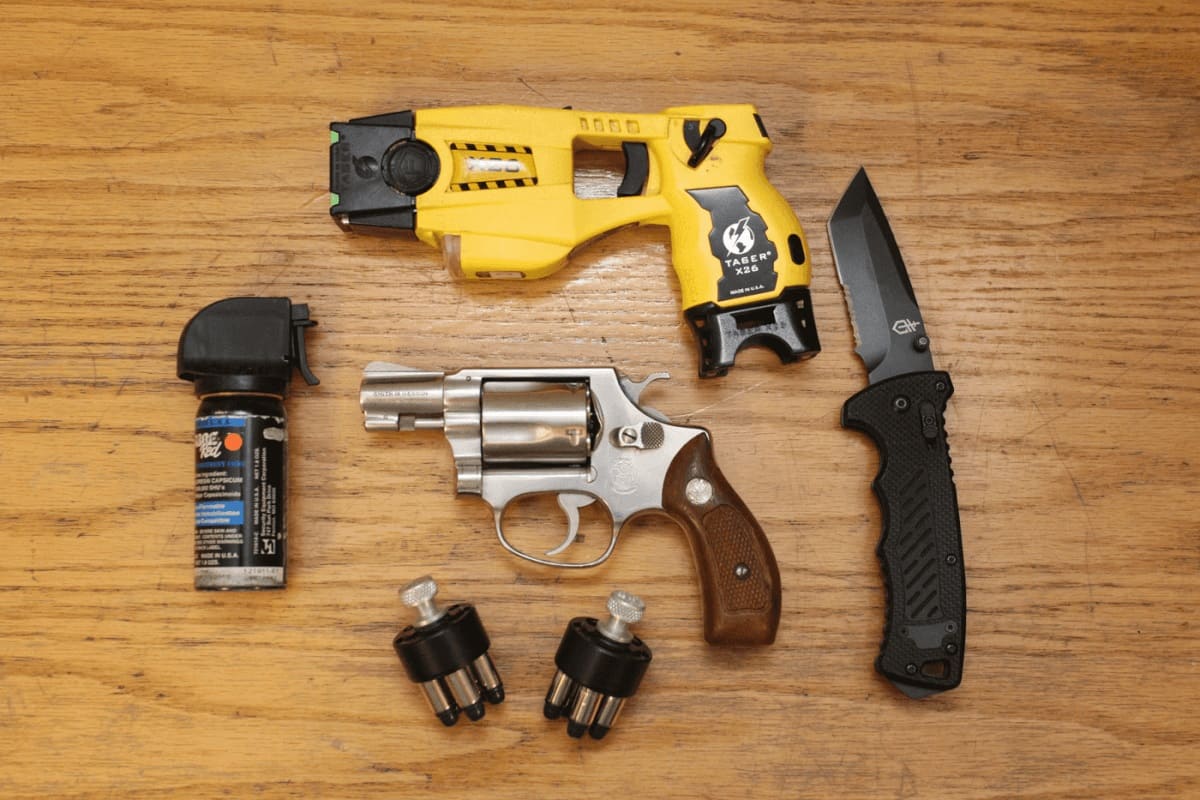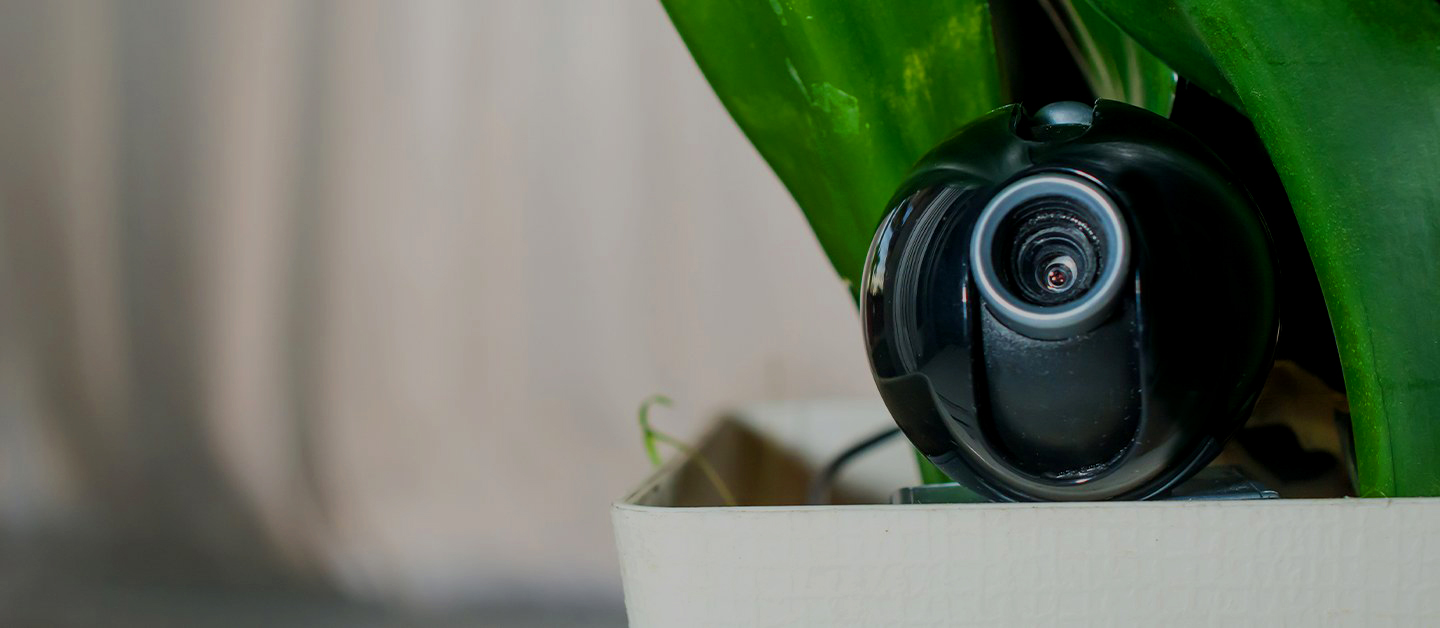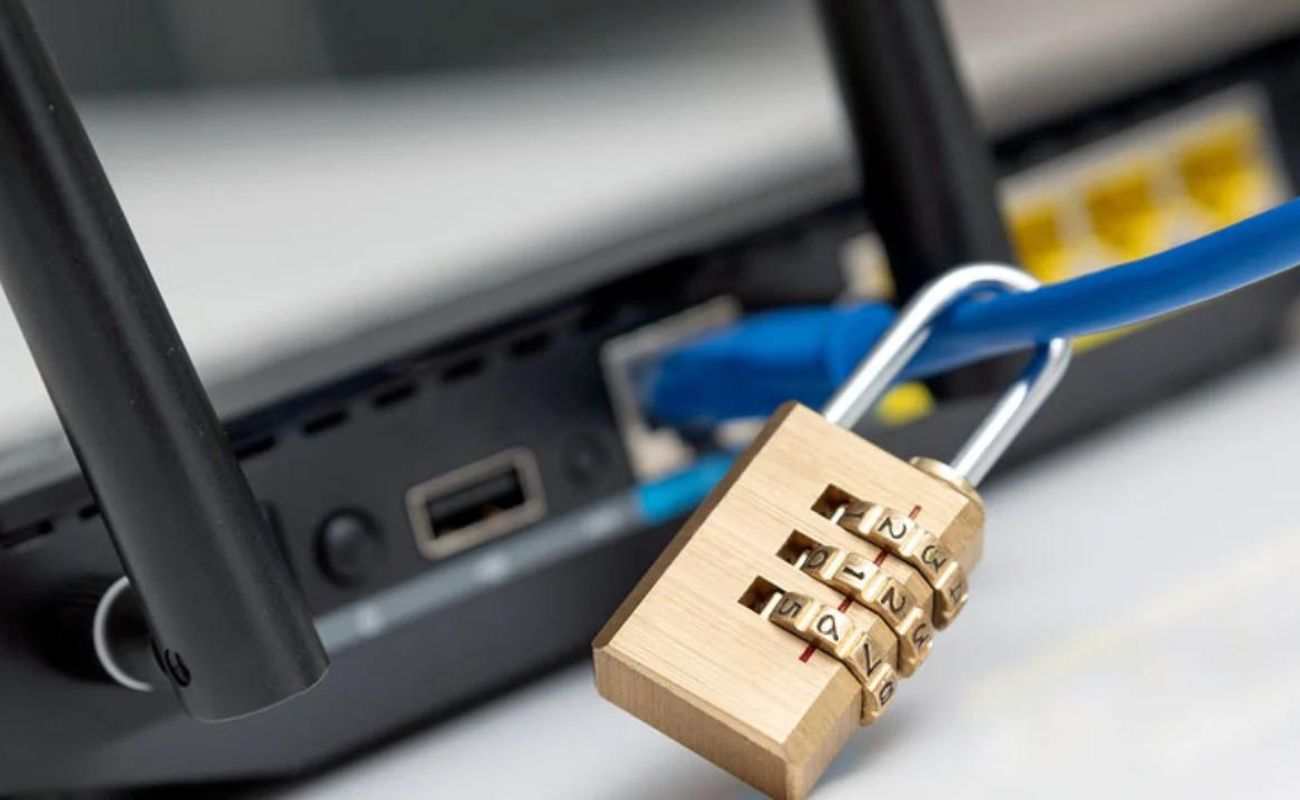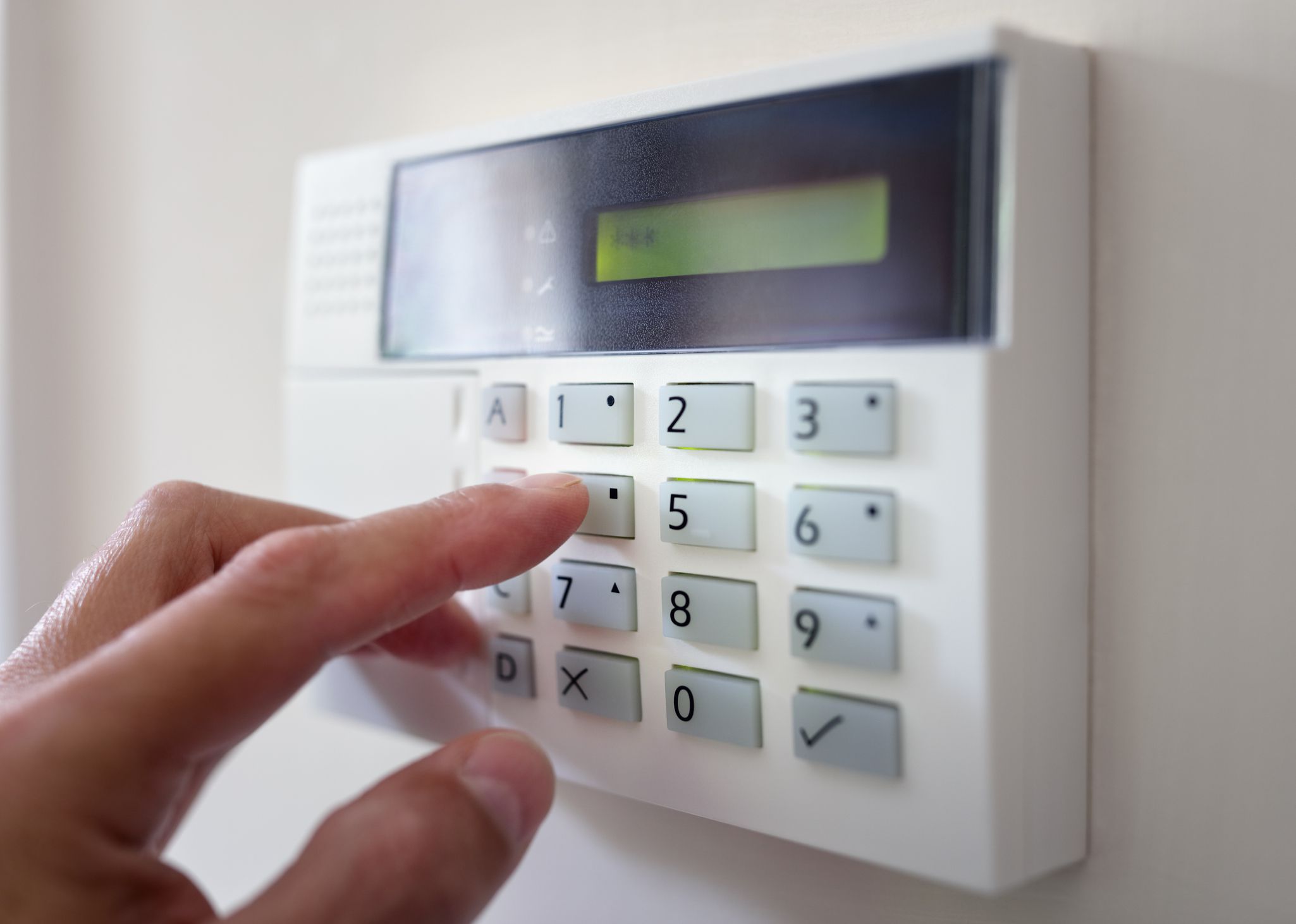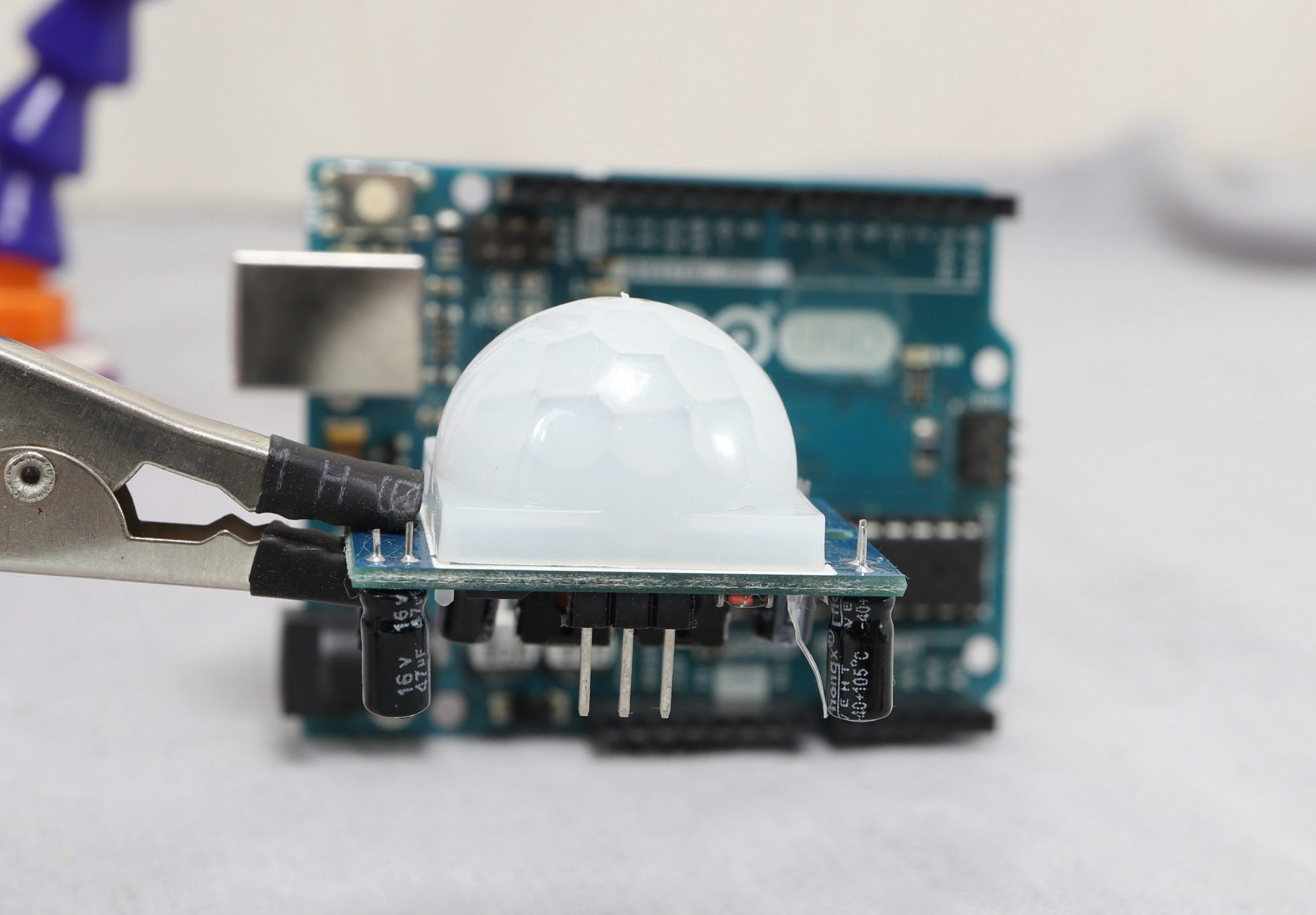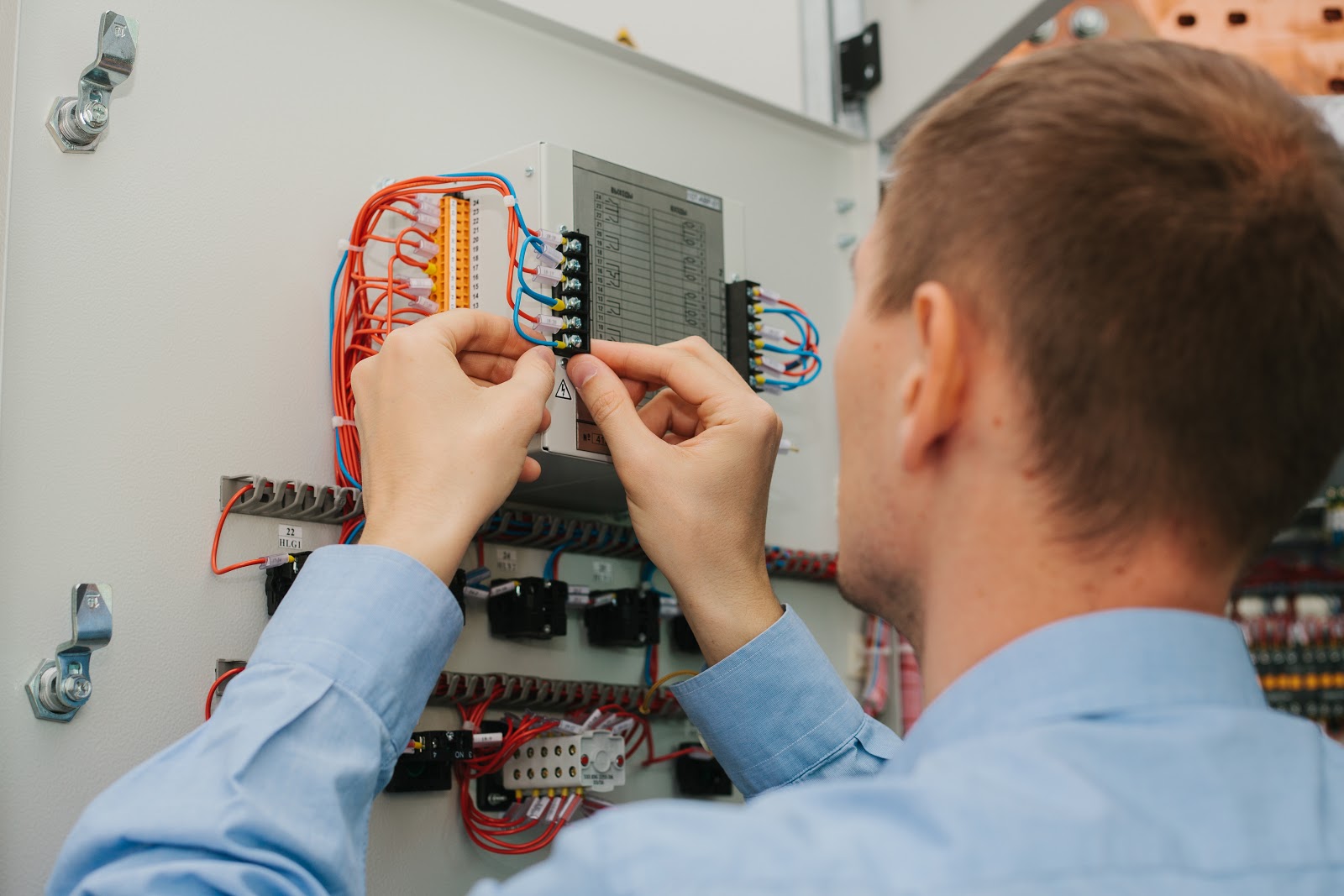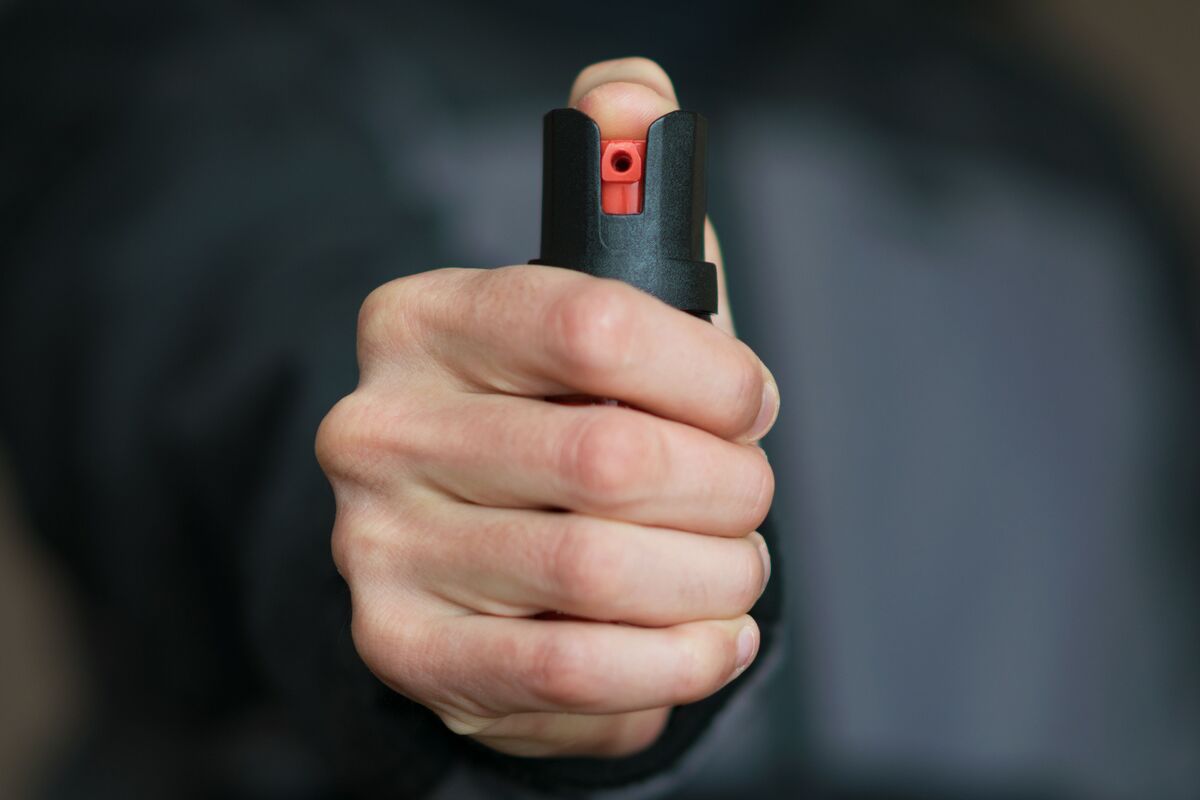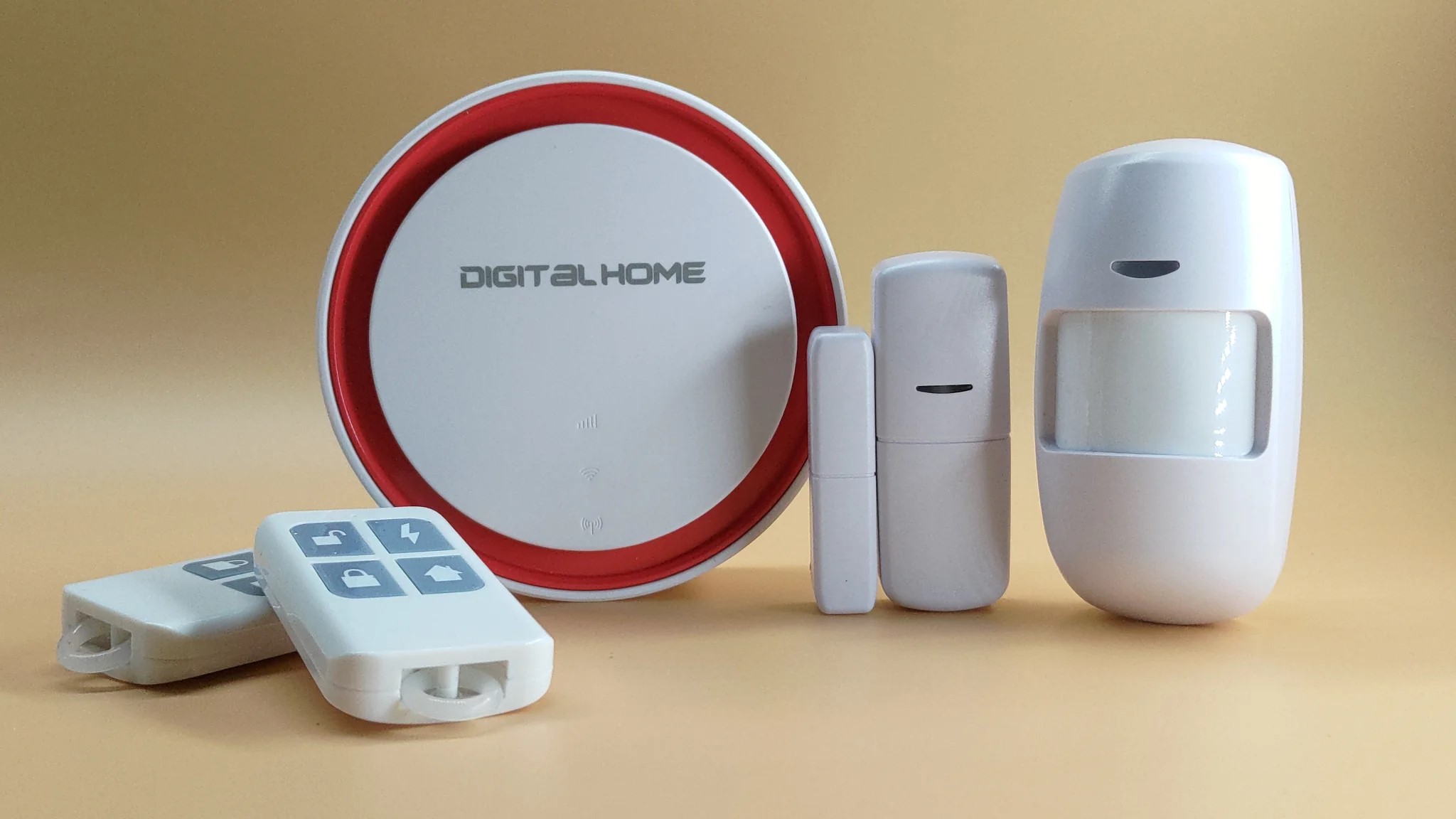Home>Home Security and Surveillance>What Percentage Of People Use Indoor Home Surveillance
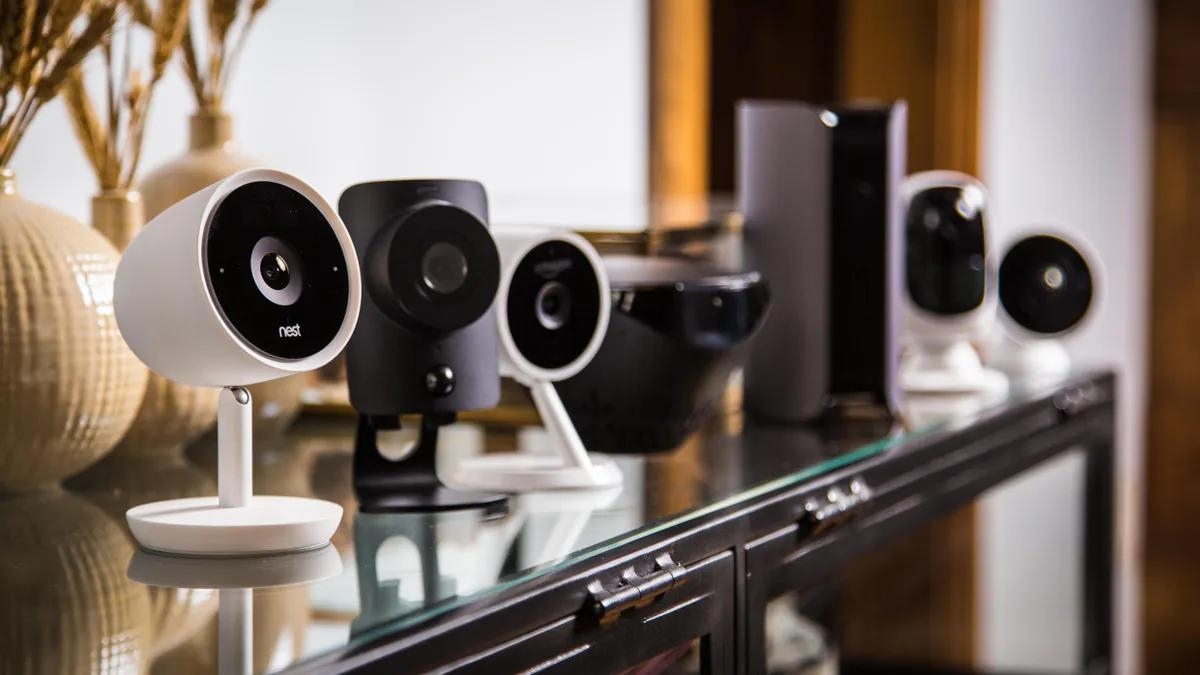

Home Security and Surveillance
What Percentage Of People Use Indoor Home Surveillance
Modified: March 6, 2024
Discover the percentage of people who use indoor home surveillance for increased home security and surveillance. Gain insights into the popularity of home security systems today.
(Many of the links in this article redirect to a specific reviewed product. Your purchase of these products through affiliate links helps to generate commission for Storables.com, at no extra cost. Learn more)
Introduction
Welcome to the era of advanced home security and surveillance systems. With the increasing concerns and need for safety, more and more people are turning to indoor home surveillance to protect their homes, loved ones, and valuable possessions. Indoor home surveillance has gained significant popularity in recent years, providing homeowners with the ability to monitor their property from anywhere at any time.
Indoor home surveillance refers to the use of camera systems installed inside the home to capture and record activities. These systems offer real-time monitoring, recording, and playback functionalities, allowing homeowners to keep an eye on their property and loved ones, even when they are away.
The importance of indoor home surveillance cannot be overstated. It acts as a deterrent to potential burglars or intruders, providing a sense of security and peace of mind. It also enables homeowners to quickly respond to emergencies, accidents, or suspicious activities. Moreover, indoor home surveillance systems assist in documenting and providing evidence in case of theft, vandalism, or other illegal activities.
Several factors influence the usage of indoor home surveillance systems. One of the primary factors is the rise in crime rates and a general concern for safety. Additionally, the evolution of technology has made surveillance systems more affordable, user-friendly, and accessible to the general public. Advancements such as high-definition cameras, wireless connectivity, mobile applications, and cloud storage have made indoor home surveillance more convenient and effective than ever before.
In this article, we will delve into the statistical overview of indoor home surveillance usage, analyze the demographics of indoor home surveillance users, discuss the benefits and drawbacks of different surveillance systems, explore popular brands and models, provide tips for choosing the right system, and address the privacy and security concerns surrounding indoor home surveillance.
So, if you’re considering adding an indoor home surveillance system to your residence or simply curious about the current trends in surveillance usage, read on to gain valuable insights and make an informed decision about protecting your home and loved ones.
Key Takeaways:
- About 28% of U.S. households use indoor home surveillance, which helps deter burglars, provides remote monitoring, and aids in evidence collection in case of a crime.
- Factors like rising crime rates, technological advances, and privacy concerns influence the usage of indoor home surveillance, making it an essential security measure for homeowners.
Importance of Indoor Home Surveillance
Indoor home surveillance plays a crucial role in ensuring the safety and security of your home and loved ones. It provides numerous benefits that go beyond just monitoring activities within your property. Let’s explore the key reasons why indoor home surveillance is important:
- Deterrence: One of the primary benefits of indoor home surveillance is its deterrent effect. The presence of visible security cameras in and around your home acts as a powerful deterrent to potential burglars and intruders. The knowledge that their actions are being recorded and can be used as evidence in case of a crime significantly reduces the likelihood of a break-in or robbery.
- Remote Monitoring: Indoor home surveillance allows you to monitor your home remotely. With the advent of mobile applications and internet connectivity, you can access live video feeds from your cameras using your smartphone, tablet, or computer. This feature is especially useful for frequent travelers or those who spend long hours away from home, as it enables them to check in on their property and loved ones from anywhere at any time.
- Prevention of Unauthorized Entry: Indoor home surveillance systems provide real-time alerts and notifications when there is any suspicious activity or unauthorized entry detected. These alerts allow you to take immediate action, whether it be contacting law enforcement or notifying a neighbor or family member to investigate the situation. By having eyes on your property 24/7, you can prevent potential crimes and ensure a timely response in case of emergencies.
- Evidence Collection: In the unfortunate event of a crime, having recorded footage from indoor home surveillance cameras can be invaluable. It serves as concrete evidence helping law enforcement agencies identify and apprehend the culprits. Additionally, it aids in insurance claims and can expedite the recovery process by providing evidence of stolen items, property damage, or any other criminal activities.
- Peace of Mind: Indoor home surveillance provides homeowners with a sense of peace and security. Whether you are at work, on vacation, or simply sleeping soundly at night, knowing that your home is being monitored gives you peace of mind. It alleviates worries and anxieties about potential intrusions, accidents, or emergencies, allowing you to relax and focus on other aspects of your life.
Overall, indoor home surveillance systems are an essential component of a comprehensive home security strategy. They act as a proactive measure to prevent crimes, assist in law enforcement investigations, provide remote monitoring capabilities, and offer peace of mind to homeowners. By investing in an indoor home surveillance system, you are taking a crucial step towards protecting your property and ensuring the safety of your loved ones.
Factors Influencing Indoor Home Surveillance Usage
Several factors influence the usage of indoor home surveillance systems. These factors can vary from individual preferences and concerns to external influences and technological advancements. Understanding these factors can provide insights into why more and more people are opting for indoor home surveillance. Let’s explore the key factors that influence indoor home surveillance usage:
- Security Concerns: Heightened security concerns, including rising crime rates and increased awareness of potential threats, are major factors driving the adoption of indoor home surveillance. Homeowners want to protect their property and loved ones, and indoor home surveillance provides a proactive security measure to achieve that peace of mind.
- Technological Advances: Advances in technology have made indoor home surveillance more accessible, affordable, and user-friendly. High-definition cameras with improved low-light capabilities, wireless connectivity options, and cloud storage have revolutionized surveillance systems. These advancements have eliminated the need for complex installations and expensive equipment, making indoor home surveillance more feasible for a wider range of homeowners.
- Convenience and Remote Monitoring: The ability to remotely monitor your home is a significant factor in the popularity of indoor home surveillance. Mobile applications and internet connectivity allow homeowners to check live video feeds, receive real-time alerts, and control their surveillance systems from anywhere. This convenience appeals to busy individuals, frequent travelers, and those who want to keep an eye on their property even when they are not physically present.
- Evidence Collection and Insurance: The potential for gathering evidence in case of a break-in, theft, or other criminal activities is another influential factor. Indoor home surveillance captures crucial footage that can aid in identifying and apprehending criminals. Additionally, having documented evidence can speed up insurance claims and ensure a smoother recovery process.
- Integration with Smart Home Technology: Indoor home surveillance systems can integrate seamlessly with other smart home devices, such as door locks, motion sensors, and security alarms. This integration enhances the overall security of the property and allows homeowners to control and monitor all aspects of their home security from a centralized hub or app.
- Privacy Concerns: While the benefits of indoor home surveillance are substantial, privacy concerns are a factor that may influence usage. Some individuals may hesitate to install surveillance systems due to concerns about their privacy and the potential for misuse or unauthorized access to recorded footage. Striking a balance between security and privacy is crucial, and homeowners should educate themselves about privacy laws and best practices for using indoor home surveillance.
These factors, among others, contribute to the increasing adoption of indoor home surveillance systems. As technology continues to advance and security concerns persist, the usage of indoor home surveillance is expected to grow. Ultimately, each homeowner’s decision to install a surveillance system depends on their unique circumstances, priorities, and comfort level with technology.
Statistical Overview of Indoor Home Surveillance Usage
Indoor home surveillance has become increasingly prevalent in recent years, driven by the desire for enhanced home security and advancements in surveillance technology. Let’s explore some key statistics that provide an overview of indoor home surveillance usage:
- In a survey conducted by the National Telecommunications and Information Administration (NTIA) in 2020, it was found that approximately 28% of U.S. households have some form of indoor home surveillance system.
- According to a report by Statista, the global market size of home security systems, including indoor surveillance, was valued at $16.7 billion in 2020 and is projected to reach $22.3 billion by 2025 with a compound annual growth rate (CAGR) of 5.9%.
- The affordability and accessibility of indoor home surveillance systems have contributed significantly to their usage. The average cost of a basic indoor surveillance camera has decreased over the years, making it more affordable for homeowners to install multiple cameras for comprehensive coverage.
- In terms of demographics, the usage of indoor home surveillance tends to be higher among homeowners and individuals with higher incomes. According to a survey conducted by Pew Research Center, 32% of homeowners have some form of surveillance camera installed in their homes.
- The popularity of do-it-yourself (DIY) indoor surveillance systems has grown exponentially. Many homeowners opt for user-friendly, self-installable camera systems that do not require professional assistance or complex wiring installations. DIY surveillance systems accounted for approximately 85% of the global smart home security camera market in 2020, according to Strategy Analytics.
- Integration of indoor home surveillance systems with voice assistants and smart home platforms has gained traction. This allows users to control and monitor their cameras using voice commands or through a centralized smart home hub.
These statistics indicate a growing trend towards the adoption of indoor home surveillance systems. The advancements in technology, decreasing costs, and increasing awareness of the benefits of surveillance have contributed to the increased usage among homeowners.
It is important to note that while statistics provide a general overview, the usage of indoor home surveillance can vary based on regional factors, cultural differences, and personal preferences. Factors such as crime rates, perceived safety, and individual privacy concerns play a role in determining the adoption and usage rates of indoor home surveillance systems.
Overall, the statistical data supports the notion that indoor home surveillance has become a prevalent security measure for homeowners, with an upward trajectory expected in the coming years as technology continues to evolve and more individuals prioritize the safety of their homes and loved ones.
Demographic Analysis of Indoor Home Surveillance Users
Indoor home surveillance systems are utilized by a diverse range of individuals across different demographics. Several factors influence the adoption and usage rates of these systems, including income levels, age groups, homeownership status, and regional variations. Let’s delve into a demographic analysis of indoor home surveillance users:
- Income Levels: Higher income levels tend to correlate with higher adoption rates of indoor home surveillance systems. Individuals with higher disposable income are more likely to invest in advanced security measures, including surveillance cameras. This can be attributed to the fact that they have the financial means to afford the initial setup costs and monthly subscription fees associated with some surveillance systems.
- Homeownership Status: Homeowners are generally more inclined to install indoor home surveillance systems compared to renters. Owning a home often comes with a greater sense of responsibility for its security, prompting homeowners to invest in measures like surveillance systems. Additionally, homeowners have more flexibility in terms of system installation and customization compared to renters who may have restrictions imposed by landlords or limited control over property modifications.
- Age Groups: The usage of indoor home surveillance spans across different age groups, but younger individuals tend to adopt these systems at a higher rate. Millennials and Generation Z, who are more comfortable with technology and have grown up in an era of increased security concerns, are more likely to prioritize indoor home surveillance as part of their overall home security strategy. That said, older individuals are also recognizing the benefits of surveillance systems and are adopting them to protect their homes and loved ones.
- Regional Variations: The usage of indoor home surveillance can vary based on geographical factors and regional crime rates. Areas with higher crime rates or a history of security breaches may see a higher adoption rate of surveillance systems as homeowners prioritize protection. Additionally, cultural factors and perceptions of safety can influence the adoption of indoor home surveillance, with some regions being more inclined towards investing in these security measures than others.
While these demographic factors provide a general overview, it is important to note that the adoption of indoor home surveillance systems is not limited to any specific group. The benefits of enhanced home security and technological advancements have made these systems appealing to a wide range of individuals, regardless of their demographic profile.
As the technology continues to evolve and become more accessible, it is expected that the usage of indoor home surveillance will continue to expand across all demographics. The increasing importance placed on home security, coupled with the convenience and peace of mind offered by surveillance systems, makes them an attractive option for homeowners of all backgrounds and ages.
Read more: What Are The Best Indoor Security Cameras
Benefits and Drawbacks of Indoor Home Surveillance Systems
Indoor home surveillance systems offer a range of benefits that contribute to the overall security and peace of mind for homeowners. However, it is important to consider the drawbacks as well in order to make an informed decision. Let’s examine the benefits and drawbacks of indoor home surveillance systems:
Benefits:
- Enhanced Home Security: The primary benefit of indoor home surveillance is improved security. Surveillance cameras act as a deterrent to potential burglars and intruders, reducing the risk of break-ins and other criminal activities. The mere presence of cameras can significantly increase the security of your home.
- Remote Monitoring: Indoor home surveillance allows homeowners to monitor their property remotely. With the help of mobile applications, you can access live video feeds and receive real-time alerts from your surveillance system. This feature is especially beneficial for individuals who are frequently away from home or who want to keep an eye on their property while at work or on vacation.
- Documentation and Evidence: Indoor home surveillance systems provide valuable evidence in the event of a crime. Recorded footage can help identify perpetrators, provide evidence for legal proceedings, and assist law enforcement agencies in their investigations. It can also aid in insurance claims for stolen goods or property damage.
- Peace of Mind: Knowing that your home is equipped with an indoor surveillance system offers peace of mind. Whether you’re inside your home or miles away, you can rest assured that your property, loved ones, and valuable possessions are under watch. This sense of security allows homeowners to live with greater ease and confidence.
- Cross Integration with Home Automation: Indoor home surveillance systems can be integrated with other smart home devices, such as door locks, motion sensors, and security alarms. This integration enhances the overall security of your home and allows for centralized control and monitoring through a single app or hub.
Drawbacks:
- Privacy Concerns: Installing indoor surveillance cameras raises privacy concerns, both for individuals within the home and for neighbors or passersby who might be captured on camera. It is important to place cameras in appropriate locations and comply with privacy laws and regulations to respect the privacy rights of others.
- Initial Installation and Maintenance Costs: The installation and initial setup of indoor home surveillance systems can involve upfront costs, especially for professional installation or higher-end camera models. Additionally, there may be ongoing maintenance costs, including the need to replace cameras or upgrade storage options.
- False Alarms and Notifications: Indoor surveillance systems can sometimes trigger false alarms or notifications due to movement from pets, passing vehicles, or other non-threatening factors. This can lead to unnecessary stress or disruption in your daily routine. To minimize false alarms, it is important to properly configure the system’s motion detection settings.
- Dependence on Technology: Indoor home surveillance systems rely on technology, including internet connectivity and power supply. In the event of power outages or internet disruptions, the system’s functionality may be temporarily compromised. It is important to have backup solutions in place or choose a system with built-in battery backup to ensure continuous monitoring.
- Misuse or Unauthorized Access to Footage: There is a potential risk of misuse or unauthorized access to the recorded footage from indoor surveillance cameras. It is crucial to take appropriate measures to secure the system, including setting strong passwords, regularly updating firmware, and limiting access to authorized individuals.
By weighing the benefits and drawbacks, homeowners can make an informed decision about the installation and usage of indoor home surveillance systems. It is important to consider individual needs, privacy concerns, and budget constraints to ensure that the system aligns with your specific requirements for home security.
Popular Indoor Home Surveillance Brands and Models
When it comes to choosing an indoor home surveillance system, there are several reputable brands and models to consider. These brands offer a wide range of features, reliability, and customer support. Here are some popular indoor home surveillance brands and models:
- Ring: Ring is a well-known brand that offers a variety of indoor surveillance cameras. Their lineup includes the Ring Indoor Cam, Ring Stick Up Cam, and Ring Floodlight Cam. Ring cameras are known for their easy setup, high-resolution video quality, and integration with the Ring ecosystem of home security devices.
- Arlo: Arlo is renowned for its wire-free cameras, making installation and placement flexible. Their indoor surveillance cameras, such as the Arlo Pro 3 and Arlo Ultra, offer excellent video quality, advanced motion detection, and two-way audio capabilities. Arlo cameras are also compatible with popular smart home platforms like Amazon Alexa and Google Assistant.
- Nest: Nest, a subsidiary of Google, provides indoor home surveillance cameras with advanced features. The Nest Cam Indoor and Nest Cam IQ Indoor offer high-definition video, intelligent alerts, and facial recognition capabilities. Nest cameras are known for their seamless integration with other Nest devices, creating a comprehensive smart home ecosystem.
- Blink: Blink, now owned by Amazon, offers affordable and easy-to-use indoor surveillance cameras. The Blink Indoor and Blink Mini cameras provide reliable video monitoring, motion detection, and cloud storage options. Blink cameras are known for their long battery life, making them ideal for areas where power outlets are not easily accessible.
- Wyze: Wyze offers budget-friendly indoor surveillance cameras without compromising on features. The Wyze Cam Pan and Wyze Cam v3 provide 1080p video quality, motion tracking, and night vision capabilities. Wyze cameras also offer free cloud storage options, making them a cost-effective choice for homeowners.
These are just a few popular brands and models in the market, each with its own set of features, pricing, and performance. It is important to consider your specific requirements, budget, and compatibility with other smart home devices when selecting a brand or model.
Before making a purchase, read customer reviews, compare specifications, and consider factors like video quality, field of view, storage options, and integration capabilities. Additionally, check for warranty and customer support offered by the brand to ensure a positive experience.
Remember that the right indoor home surveillance system for you will depend on your unique needs and preferences. Take the time to research and choose a reputable brand and model that best aligns with your specific requirements for home security and surveillance.
Tip: According to a 2019 survey, about 15% of American households use indoor home surveillance systems. This percentage may have increased since then, but it gives an idea of the popularity of indoor surveillance.
Tips for Choosing the Right Indoor Home Surveillance System
Choosing the right indoor home surveillance system is a crucial step in ensuring the safety and security of your home. With the wide range of options available, it’s important to consider your specific needs and priorities. Here are some tips to help you select the right indoor home surveillance system:
- Determine Your Requirements: Begin by assessing your specific security needs. Consider factors such as the size and layout of your home, the areas you want to monitor, and whether you require features like night vision, two-way audio, or facial recognition.
- Video Quality: Look for indoor cameras that offer high-definition video quality. This ensures clear and detailed footage, making it easier to identify individuals or objects captured on camera. Aim for a resolution of at least 1080p for optimal video clarity.
- Field of View: Consider the camera’s field of view, which determines the area that will be covered by the camera. Choose a camera with a wide viewing angle to cover larger areas or opt for cameras with pan, tilt, and zoom capabilities for more flexibility in monitoring.
- Connectivity Options: Determine whether you want a wired or wireless indoor surveillance system. Wireless systems provide flexibility in camera placement and are easier to install, while wired systems may offer more reliable connectivity. Consider your home’s layout and the availability of power outlets when making this decision.
- Storage Options: Consider how you want your surveillance footage to be stored. Some systems offer local storage options on a memory card or hard drive, while others offer cloud storage. Cloud storage provides the advantage of remote access to footage and protection against physical damage or theft of the storage device.
- Integration with Other Devices: If you have existing smart home devices or plan to expand your smart home ecosystem, consider a surveillance system that integrates seamlessly with other devices and platforms. This allows for centralized control and monitoring of your entire smart home security system.
- User-Friendly Interface: Look for a system with a user-friendly interface and intuitive mobile or web applications. The ease of use is important for managing your surveillance system, accessing live feeds, and customizing settings without any hassle.
- Budget Considerations: Set a budget for your indoor home surveillance system and consider the upfront costs as well as any ongoing subscription fees. Be mindful of the trade-offs between price and features, and choose a system that offers the right balance for your needs.
- Read Reviews: Before making a final decision, read customer reviews and expert opinions on the surveillance system you are considering. Pay attention to feedback regarding performance, reliability, customer support, and any potential issues reported by users.
- Consider Professional Installation: If you’re not comfortable with the installation process, consider opting for professional installation. Some companies offer installation services to ensure proper placement of cameras and optimal system performance.
By considering these tips and assessing your specific requirements, you can choose an indoor home surveillance system that provides the level of security, convenience, and peace of mind you desire. Remember to prioritize aspects like video quality, field of view, storage options, and compatibility with other devices to make an informed decision.
Investing in the right indoor home surveillance system will help protect your home, loved ones, and possessions, providing you with the peace of mind you deserve.
Privacy and Security Concerns Surrounding Indoor Home Surveillance
While indoor home surveillance systems offer numerous benefits in terms of security and peace of mind, it is important to consider the privacy and security concerns associated with these systems. Here are some key considerations regarding privacy and security when using indoor home surveillance:
Privacy Concerns:
- Recording Private Spaces: Indoor surveillance systems may capture footage of private areas within your home, such as bedrooms, bathrooms, or personal living spaces. It is important to position cameras in a way that respects the privacy of individuals living in the home and prevents unintentional recording of private moments.
- Neighbor and Public Privacy: In multi-unit buildings or residences close to neighboring properties, indoor cameras can inadvertently capture the activities of neighbors or passersby. It is essential to position cameras in a way that minimizes the capture of activities outside your property and respect the privacy of others.
- Compliance with Laws and Regulations: Ensure that you are aware of the legal requirements and regulations related to indoor surveillance in your jurisdiction. Familiarize yourself with laws concerning the placement of cameras, notification requirements, and the storage and use of recorded footage.
- Secure Access to the Footage: Take measures to secure access to the recorded footage from your indoor surveillance system. Set strong passwords and enable two-factor authentication to prevent unauthorized access. Regularly update the firmware of your cameras and any associated apps to protect against potential vulnerabilities.
- Informing Household Members and Visitors: Inform household members, guests, and service providers about the presence of indoor surveillance cameras. Display signs or notices to make others aware that they are being recorded. This transparency respects the privacy rights of individuals while acting as a deterrent to potential unauthorized activities.
Security Concerns:
- Data Protection: Indoor home surveillance systems that utilize cloud storage may raise concerns about the security of your recorded footage. Choose reputable brands and service providers that implement strong security measures, such as encryption and secure data centers, to protect your footage from unauthorized access or data breaches.
- Safeguarding Against Hacking: Protect your surveillance system against potential hacking attempts. Ensure that your Wi-Fi network is secure with a strong password and avoid using default usernames and passwords for your cameras. Regularly update the firmware of your cameras to patch any known vulnerabilities.
- Regular System Maintenance: Proper maintenance of your indoor surveillance system is essential for ensuring its security. Routinely check for software updates, verify the integrity of your system’s hardware, and monitor for any suspicious activity or unauthorized access to your camera feeds or recordings.
- Minimize External Access Points: Limit external access points to your surveillance system. Disable any unnecessary remote access features and ensure that your system is not unnecessarily exposing itself to the internet. This reduces the risk of unauthorized access by potential attackers.
By being mindful of these privacy and security concerns, you can strike a balance between protecting your home and respecting privacy rights. It is crucial to prioritize the privacy of individuals within and around your home while implementing security measures to mitigate potential vulnerabilities and unauthorized access to your surveillance system.
Stay informed about privacy laws and regulations in your area, and regularly review and update the security settings of your indoor home surveillance system to ensure its effectiveness and safeguard against potential privacy and security risks.
Conclusion
Indoor home surveillance systems have become an integral part of home security strategies for many homeowners. With the advancements in technology and the increasing need for enhanced safety, these systems provide numerous benefits. However, it is important to carefully consider the various factors involved in choosing and using indoor home surveillance.
Indoor home surveillance offers enhanced security by deterring potential intruders and allowing remote monitoring of your property. It provides peace of mind, knowing that you can keep an eye on your home and loved ones, even when you are away. The ability to capture and store evidence can be crucial in identifying culprits and assisting law enforcement agencies in investigations. Integration with smart home technology adds convenience and allows for centralized control of your entire home security system.
While the benefits are evident, it is essential to address privacy and security concerns. Privacy should be respected by ensuring cameras are positioned appropriately and complying with laws and regulations. Protecting access to the recorded footage, securing your network, and regularly updating system software are crucial for maintaining the security of your indoor surveillance system.
When choosing an indoor home surveillance system, consider your specific requirements, such as video quality, field of view, storage options, and integration capabilities. Look for reputable brands that offer reliable products and customer support.
Indoor home surveillance has gained popularity across different demographics, with higher adoption rates among homeowners and individuals with higher incomes. However, the decision to install a surveillance system should ultimately align with your unique needs and comfort level with technology.
As technology continues to evolve, the usage of indoor home surveillance is expected to grow. It is important to stay informed about privacy laws, regularly review and update system settings, and prioritize the privacy of individuals within and around your home.
In conclusion, indoor home surveillance systems offer valuable security benefits but require careful consideration of privacy and security concerns. By choosing the right system, understanding the risks, and taking appropriate measures to protect privacy and secure the system, you can enhance the safety and security of your home while ensuring peace of mind for you and your loved ones.
Frequently Asked Questions about What Percentage Of People Use Indoor Home Surveillance
Was this page helpful?
At Storables.com, we guarantee accurate and reliable information. Our content, validated by Expert Board Contributors, is crafted following stringent Editorial Policies. We're committed to providing you with well-researched, expert-backed insights for all your informational needs.
